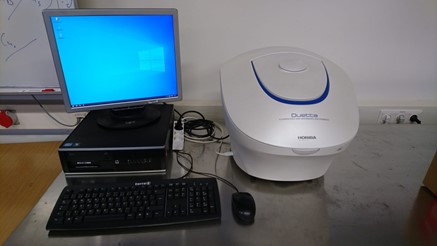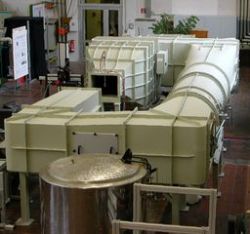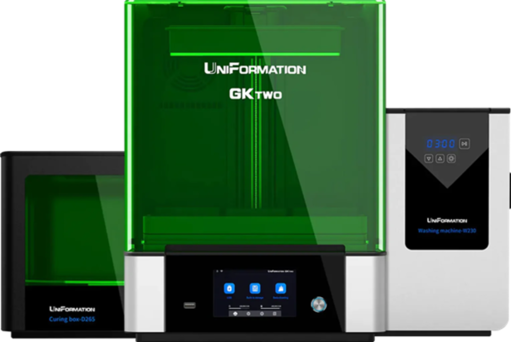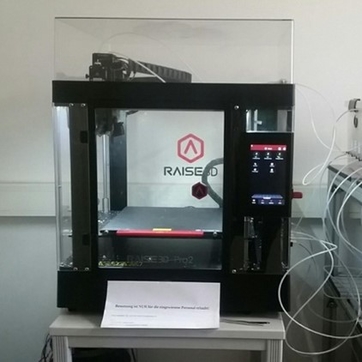Experimental Equipment
Head: Dr. Katharina Zähringer
Measurement Systems Wind tunnel Water channel Flow channels Combustion lab Rheology lab 3D Drucker
Measurement Systems
The LSS has a variety of optical and classical measurement systems at its disposal. These allow for measurements at different temporal and spatial resolutions, depending on the application. Specifically, the following is available:
- Tomographic Particle-Image-Velocimetry systems (High-Speed Tomo-PIV and Tomo-PIV):
Three-dimensional (3D3C) velocity fields can be determined with tomographic PIV. To this end the measurement volume is illuminated as a whole and several cameras trace particle movement from different angles. The 3-D particle movement can then be calculated from these different viewpoints. Two different systems are available: (i) a high-spee system with 6 Phantom VEO 640L cameras with a frame rate of 1400 Hz at full resolution and a high-speed ND:YLF laser or pulsed LED panels for ilumination of the measurement volume; (ii) the second system consists of four sCMOS cameras with an image rate of 50 Hz and an Nd:YAG-laser, which can be run at 266 nm, 355 nm and 532 nm. This enables the use of fluorescent tracer particles and thus measurements in complex geometries in which too many reflections would otherwise occur.<


High-speed Tomo-PIV in einer Blasensäule Tomo-PIV in einem Wendelreaktor - High-speed measurement system for Laser-Induced Fluorescence (LIF), Particle Image Velocimetry (stereo-PIV) and Colour Particle Tracking Velocimetry (PTV):
The system involves two high-speed cameras, intensifiers, a high-speed laser, and corresponding software for control and analysis. The two colour photography cameras can take up to 1102 images/s using the full resolution of 2016 2016 pixels and up to 4500 images/s using reduced resolution. The laser is an Nd:YLF laser with a maximum energy of 30 mJ/P and a maximum pulse rate of 2 kHz. Depending on the retained camera configuration, stereo-PIV is possible, allowing the acquisition of all velocity components (2D3C). Thanks to the colour information, a higher particle number density may be used for PTV measurements, compared to usual PTV methods, by employing different particle colours for different properties. It is thus possible to obtain very detailed flow information. Image intensifiers are used for LIF, allowing measurements of scalar quantities even at low light intensities.

High-Speed-PIV in a bubble column
- • Micro-Particle Image Velocimetry (µ-PIV):
This system allows for the measurement of velocity fields (2D3C) in very small channels. For this, a stereo-microscope is equipped with two cameras and a laser is coupled through a light fibre. Lighting of the channel is then volumetric and the measurement plane is chosen by adjusting the depth of field of the camera/microscope-combination.

µ-PIV-System with stereo-microscope
- Particle Image Velocimetry (PIV):
This includes several systems to determine two-component velocity fields (2D/2C), as well as three-component fields (2D/3C) via stereo-PIV.

Stereo-PIV in an aneurysm model
- Particle Tracking Velocimetry (PTV):
Additionally to the above mentioned High-Speed-PIV-PTV System three high-speed colour photography cameras (up to 500 images/s @ 1280 x 1024 px²) are available for stereoscopic imaging, as well as four halogen light heads or state of the art LED equipment for proper illumination for PTV measurements. In-house written software allows for 3-D particle tracking in liquid and gaseous flow.

- Laser-Induced Fluorescence (LIF):
For gas-phase LIF, two intensified cameras, a dye laser and appropriate software are employed (see also „Combustion lab“). In the liquid phase tracer LIF is used to determine scalar quantities (e.g. concentration, mixing, temperature). In particular, 2-tracer-LIF is often used by our chair in difficult lighting situations (e.g. bubble shadows) or for the characterization of micro-mixing, since a dynamic background image can be generated. High-speed-LIF can be performed via the above mentioned High-Speed system, which also includes an image intensifier.
- Laser-Doppler-Anemometry and Phase-Doppler-Anemometry:
Several systems for one- and two-component measurements in single- and two-phase flow are available. These are equipped with different lasers, e.g. DPSS-Laser, Ar+-Laser, and Nd:Yag-Laser.

LDA measurement results of the two-phase flow in a diffusor-like channel.
- Shadowgraphy:
This allows for the determination of equivalent diameters of small particles or droplets down to a size of 5 µm. It is also very useful for the examination of coalescence phenomena. For this purpose, a laser light sheet is used as light source together with a camera-mounted microscope lens. When pulsed lasers are used, velocity determination is also possible.

- Fluorescence spectrometer:
A combined fluorescence/absorption spectrometer for characterising the spectra of solutions and solids is used in particular for investigating tracer substances. These are used to detect concentrations, mass transfer or laser-induced fluorescence. The spectrometer has an excitation and detection range of 250nm to 1000nm, with a bandwidth of 1nm to 20nm.

- Constant-temperature-anemometry:
Different hot-wire anemometry systems for velocity determination are accessible and can be utilized in the wind tunnel, for example.
Wind-tunnel
Fully computer-controlled, Göttingen-type, open or closed test-section for one-phase (pure air) flow or two-phase (air/liquid) mixtures (mostly air/water). Different spray injection heads are mounted upstream of the test section for this purpose. Test section dimensions (H x W x L open/closed): 500 x 600 x 1100/1500 mm3. Three of the closed test section walls are optically transparent (400/450 x 500 mm3) for optical measurements. Flow velocity: ~0.3 to above 50 m/s; turbulence intensity: below 0.5%. Spray properties: dependent upon the spray injection heads used, Sauter diameter around 50 micrometers, flow-rate 50 l/h, for example.
The wind tunnel is equipped with a helium-filled soap bubble generator, which allows the measuring section to be seeded with helium bubbles to enable large-area measurements of the velocity fields using particle image velocimetry (Fig. 2).
 |
|
| Fig.1: Wind tunnel with open test-section (Download Flyer) | Fig. 2: Helium-filled soap bubbles as tracers for PIV measurements in the wind tunnel. |
Water channel
The open, closed-loop hydraulic channel has a maximum flow rate of 575 l/s (2100 m³/h). The dimensions are 10 m x 1.2 m x 0.8 m (L x W x H) with a reference fill level of 0.6 m. The maximum velocity at the maximum cross-section (a.2 x 0.6 m2) is 0.8 m/s. The channel is equipped with a computer-controlled traversing system with a pathway of (X/Y/Z in mm) 2000 x1200 x 250 and a micro-controlled fill level and flow velocity regulation.<
Flow channels
Different open-loop and open-channel installations for one-phase (gas or liquid) and two-phase flows are available. Examples are:
- Flow channel with elevated tank for non-pulsating flow applications,
- Closed-loop installation for flow investigation in pumps, blowers, etc.
- Open-loop channels for water and two-phase (air/water) applications
These are, depending on the application, equipped with inductive or thermal flow meters, controllable DC motors, electronic absolute or differential pressure and temperature measurement, and PC-based data acquisition.
Combustion lab
The combustion lab is equipped for the examination of gaseous combustion systems in small and medium model burners. For these studies, the following measurement systems are used:
- Laser-Induced Fluorescence (LIF),
- Raman and Rayleigh-Scattering,
- possibly both simultaneously with Particle-Image-Velocimetry (PIV).

CH-LIF-measurements in a counterflow (Rolon-) burner geometry.
Rheology lab
Various rotational rheometers and other equipment are available for investigating Newtonian and non-newtonian fluids and suspensions:
- air-mounted research rheometer „Kinexus pro+“ by Malvern with cone-plate, plate-plate and circular orifice geometry for rotational and oscillatory measurements at 0-200°C

- Capillary viscometer „Cavis 2“ by Raczek for measurements in low-viscosity liquids
- portable rheometer „VT500“ by Haake
- Rotational rheometer „CV20“ by Haake
Additionally, a MasterSizer by Malvern is on premise for particle size determination in liquids or dusts.
3D Drucker
The group has access to four 3D printers designed to accommodate a range of prototyping needs. For fast and cost-efficient printing, two FDM (Fused Deposition Modeling) printers are available: the Raise3D Pro2, a dual-extruder with a large build volume of 280mm x 305mm x 300mm, and the smaller Bambulab P1S. For applications requiring superior surface quality and liquid tightness under pressure, two resin-based SLA (Stereolithography) printers are available: the Formlabs Form3L, capable of handling large parts with a build volume of 335mm x 200mm x 300mm, and the Uniformation GKTwo, suitable for smaller resin components. This range of equipment enables quick iterations in prototyping and provides fast, one-off solutions for experimental work.
 |
 |